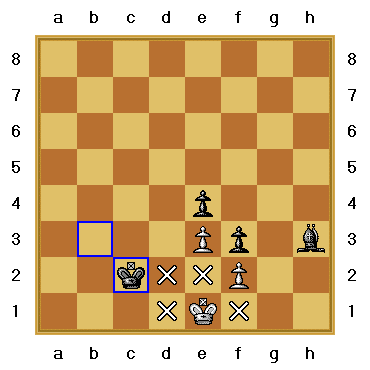|

Letter #31 - 2003
Sub:
Stalemate rule
Date:
Date: 9/9/2003 8:10:33 PM MDT
From: Dakota
To:
service@chess-poster.com
To whom it may concern:
We have an on going debate about stalemate rules. I hope that you can help us.
1. The rule that states if a player makes visits the same space with the same piece three times during the game is in question. Does this mean that a player can claim stalemate by making three repeat moves with any piece at any time during the game?
2. How is repeat move defined? In an attempt to create the three moves required for a stalemate does a player have to pass between the same two spaces on the board four times?
3. At what point is it required for the player seeking stalemate via the three repeat move rule have to announce his intentions?
We have been seeking answers to these questions all over the Internet. We hope that you can help or direct us to an authority that can.
Dakota
Dear viewer,
Actually, stalemate refers to a situation when a player's only move places his own King in check, although it's current square is not threatened. As long as he can move his King to an open square or is able to move another piece, stalemate may not occur.
In the following diagram, black's last move (b3 to c2) causes the stalemate rule since the white King does not have the use of any legal move, therefore the game is a stalemate (draw).

The other scenario which is the one you are interested in, is named
“draw by triple repetition.” The game may be drawn if the identical position is about to appear or has appeared on the chessboard three times.
Article 9 of the FIDE Laws of Chess shows the following:
The game is drawn, upon a correct claim by the player having the move, when the same position, for at least the third time (not necessarily by repetition of moves):
a. is about to appear, if he first writes his move on his score sheet and declares to the arbiter his intention to make this move, or
b. has just appeared.
Positions as in (a) and (b) are considered the same, if the same player has the move, pieces of the same kind and colour occupy the same squares, and the possible moves of all the pieces of both players are the same. Positions are not the same if a pawn could have been captured en passant or if the right to castle immediately or in the future has been changed.
The third draw rule states that the game may be drawn if the last 50 consecutive moves have been made by each player without the movement of any Pawn and without the capture of any piece.
Thank you for visiting us,
chess-poster.com |